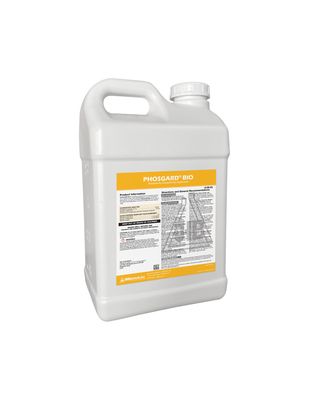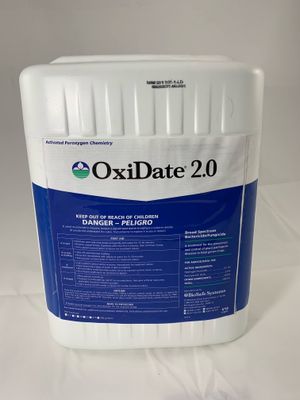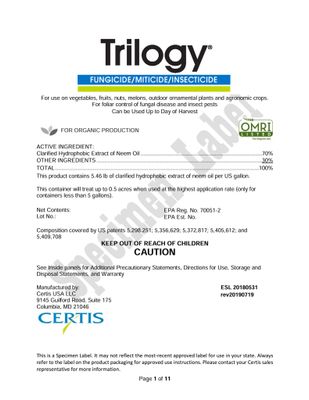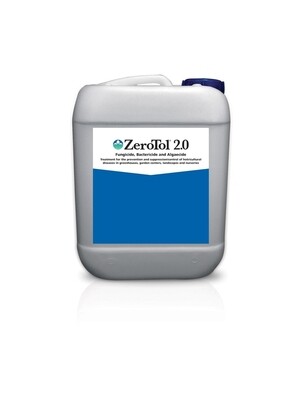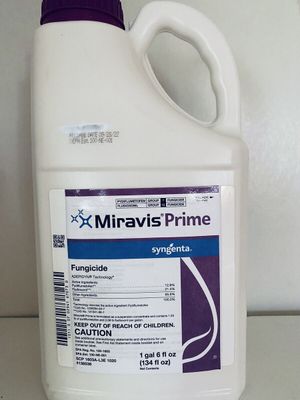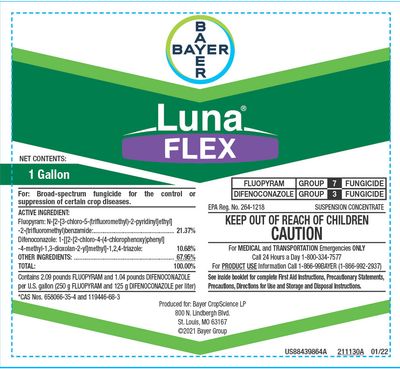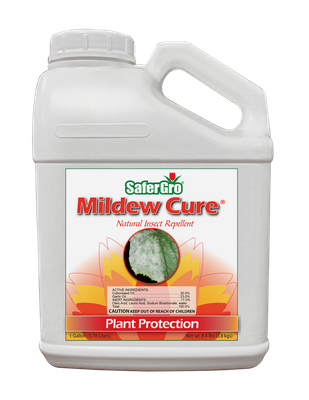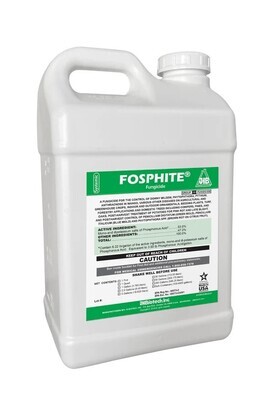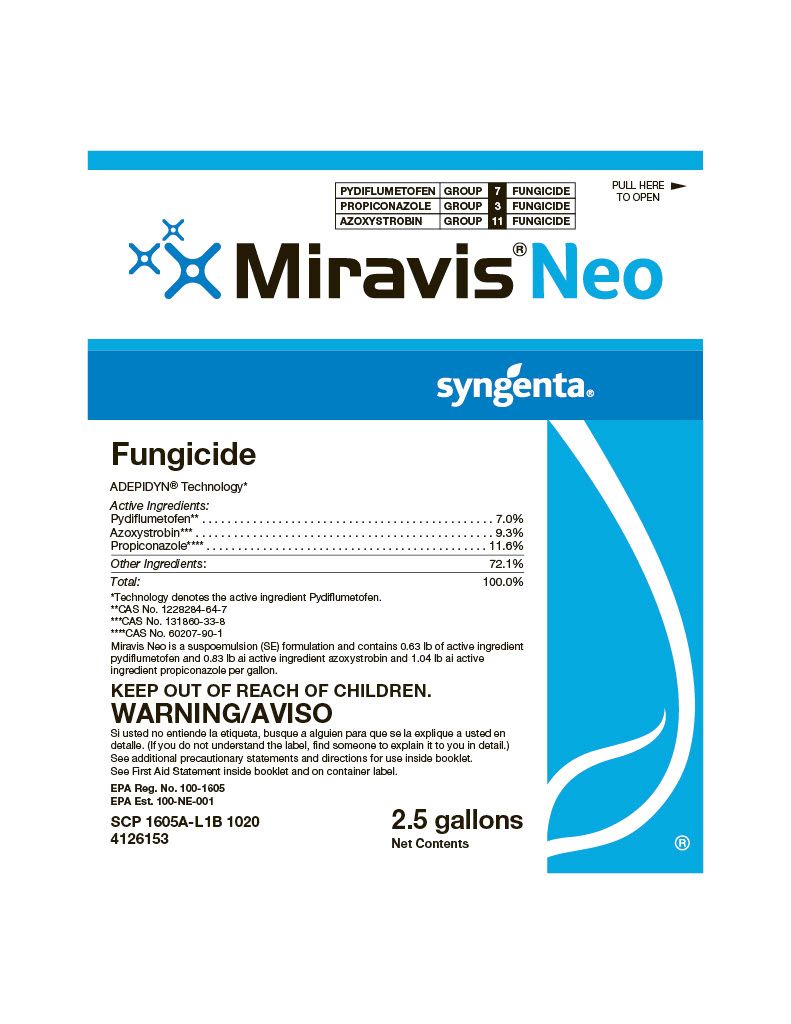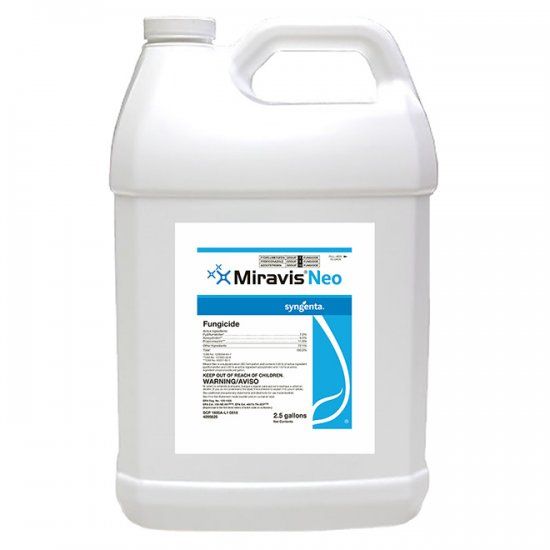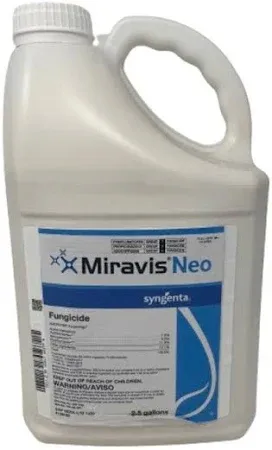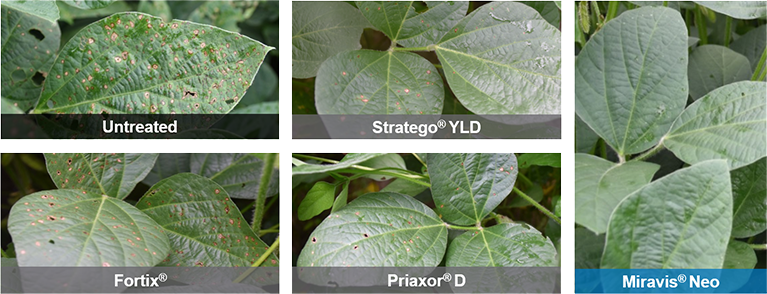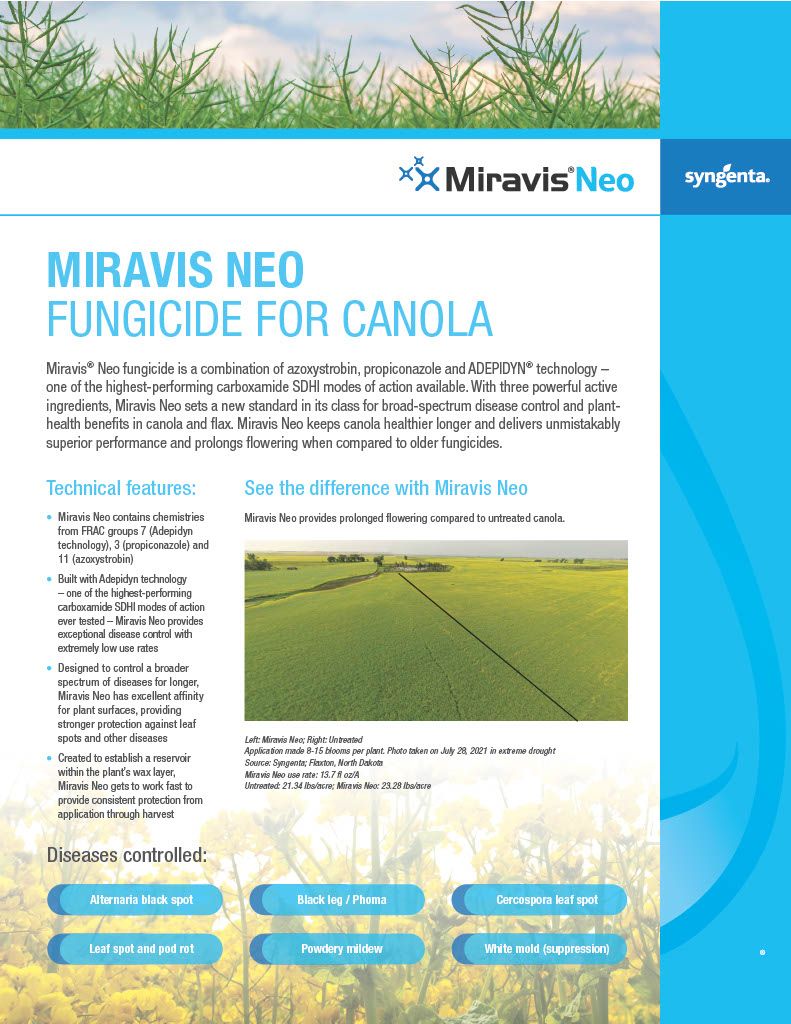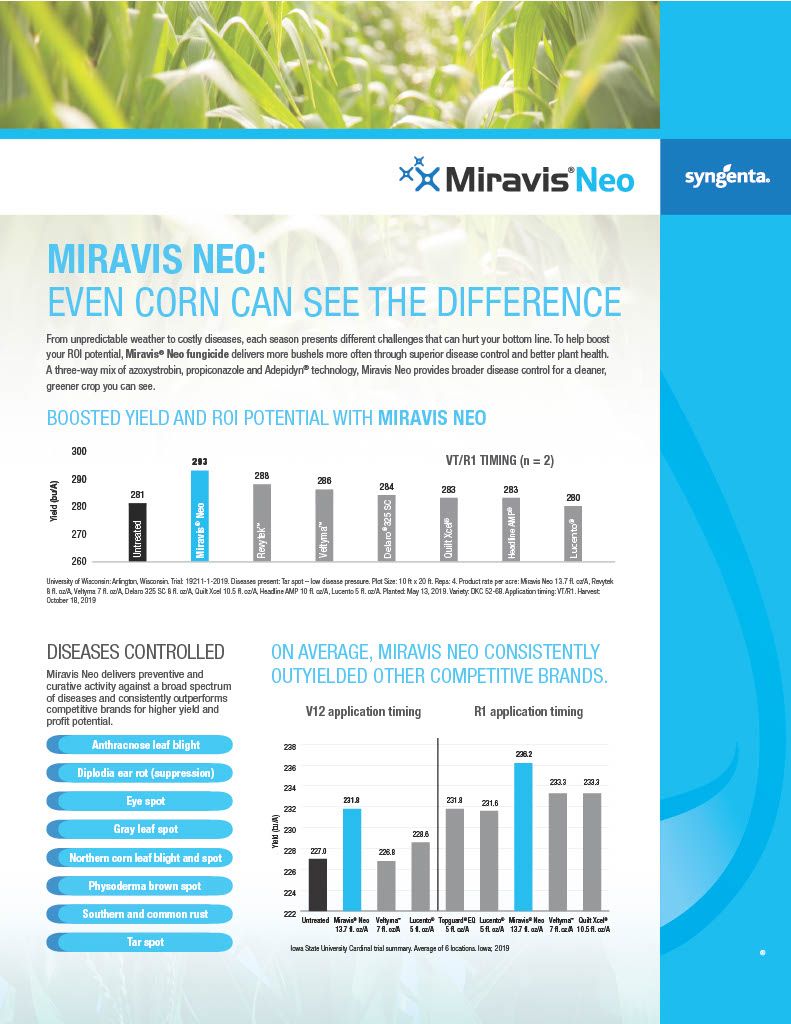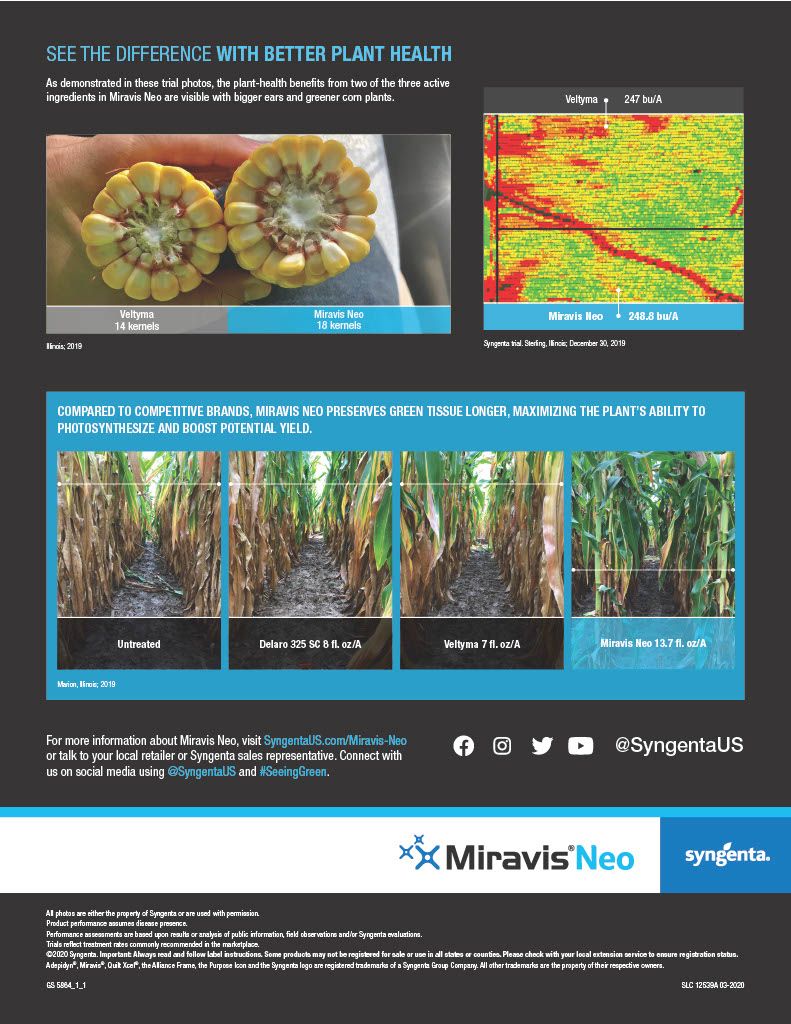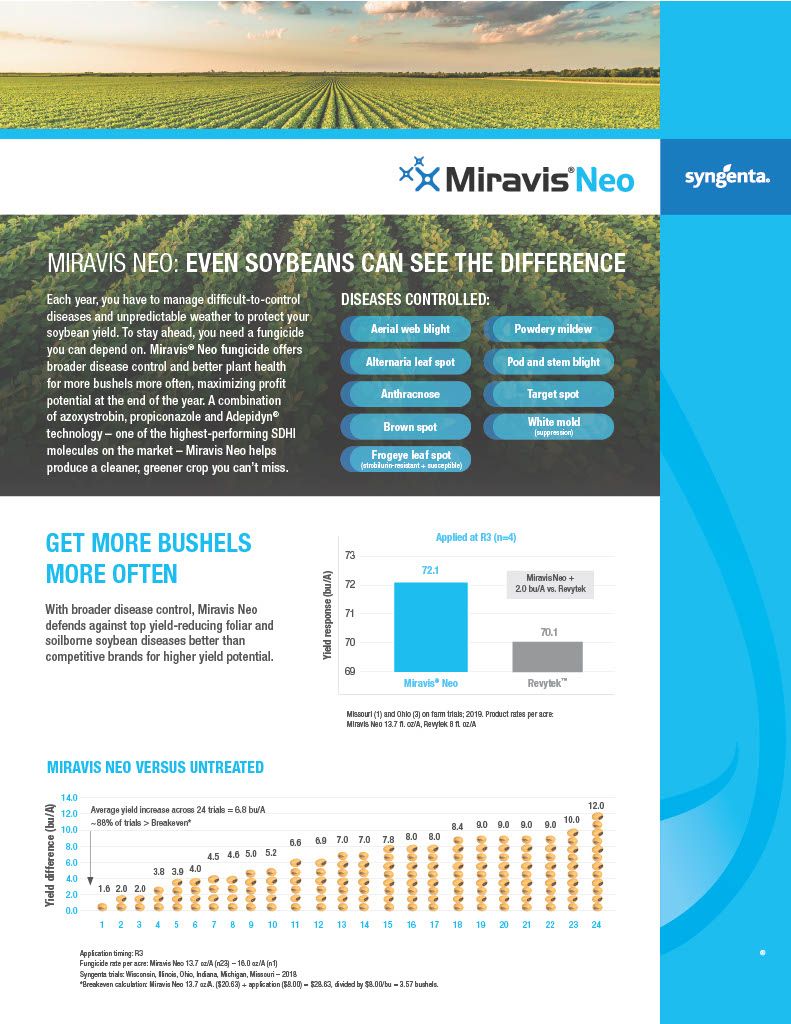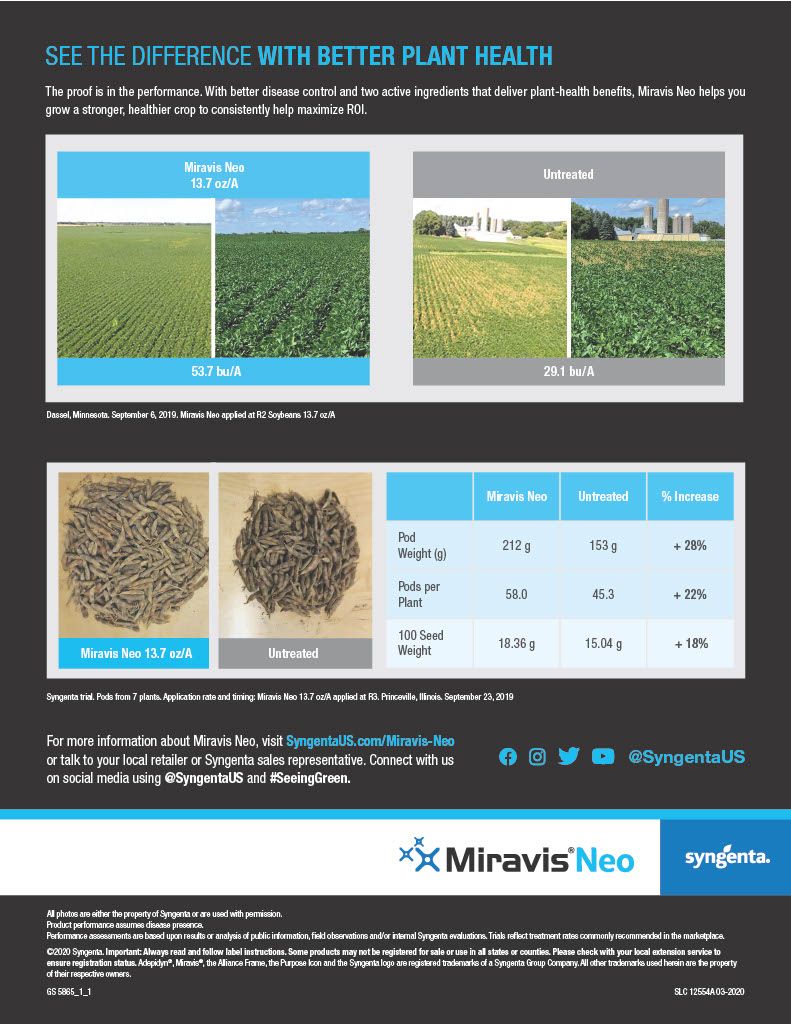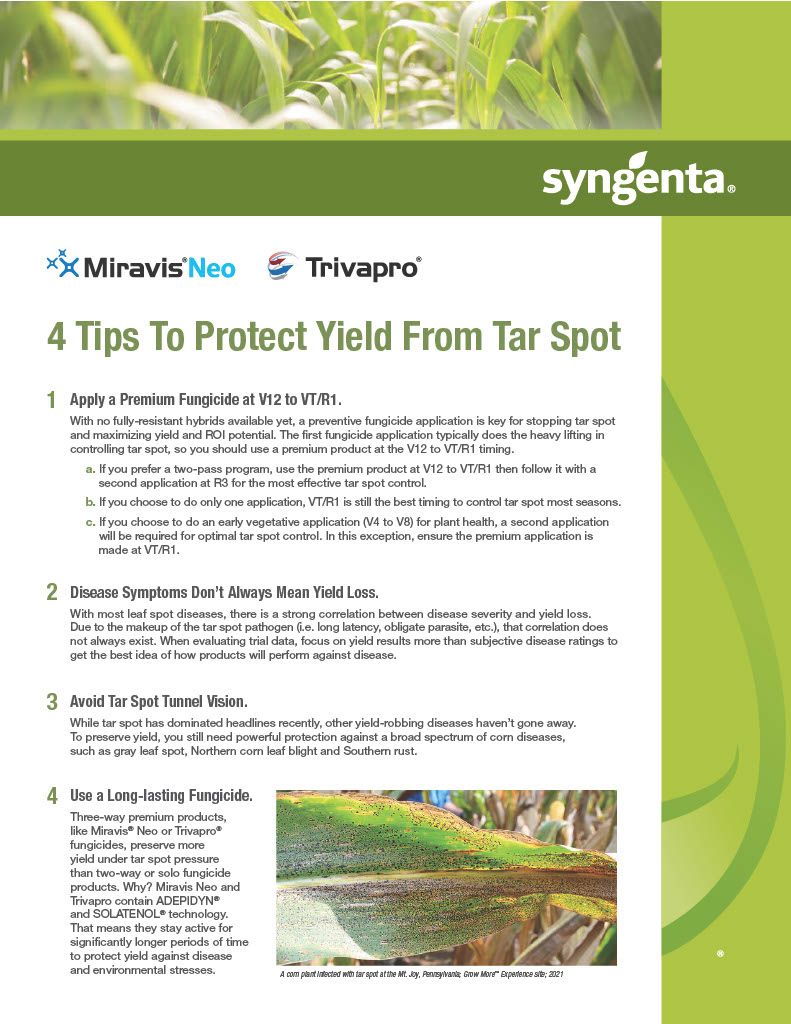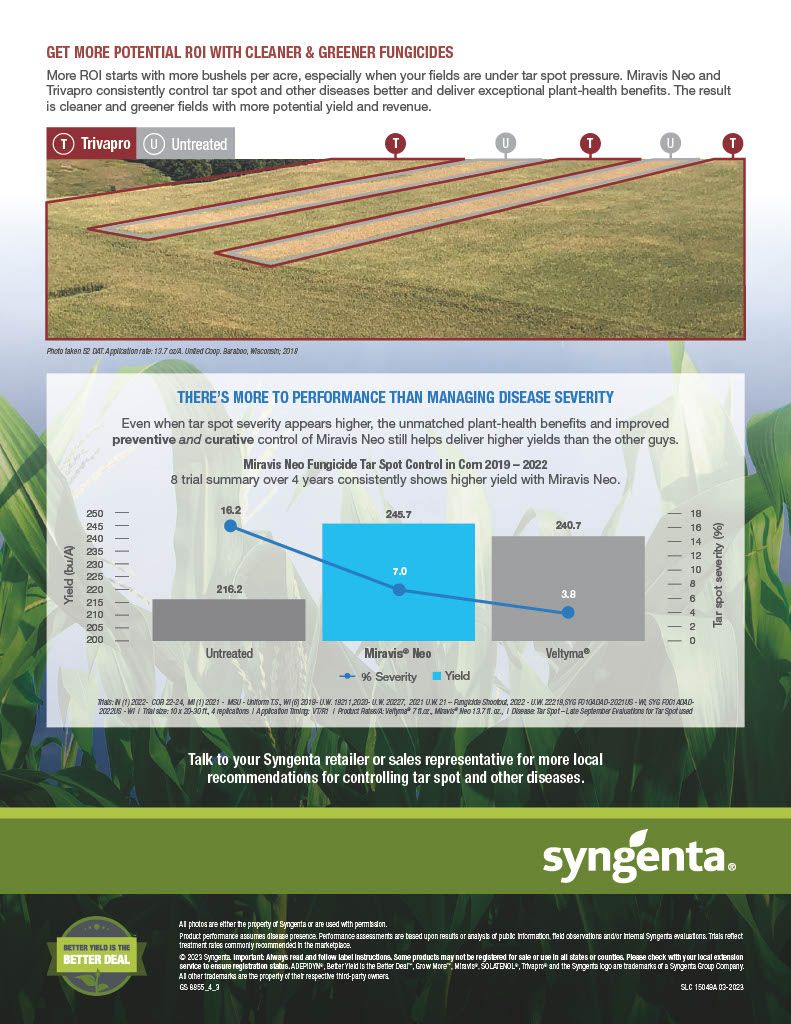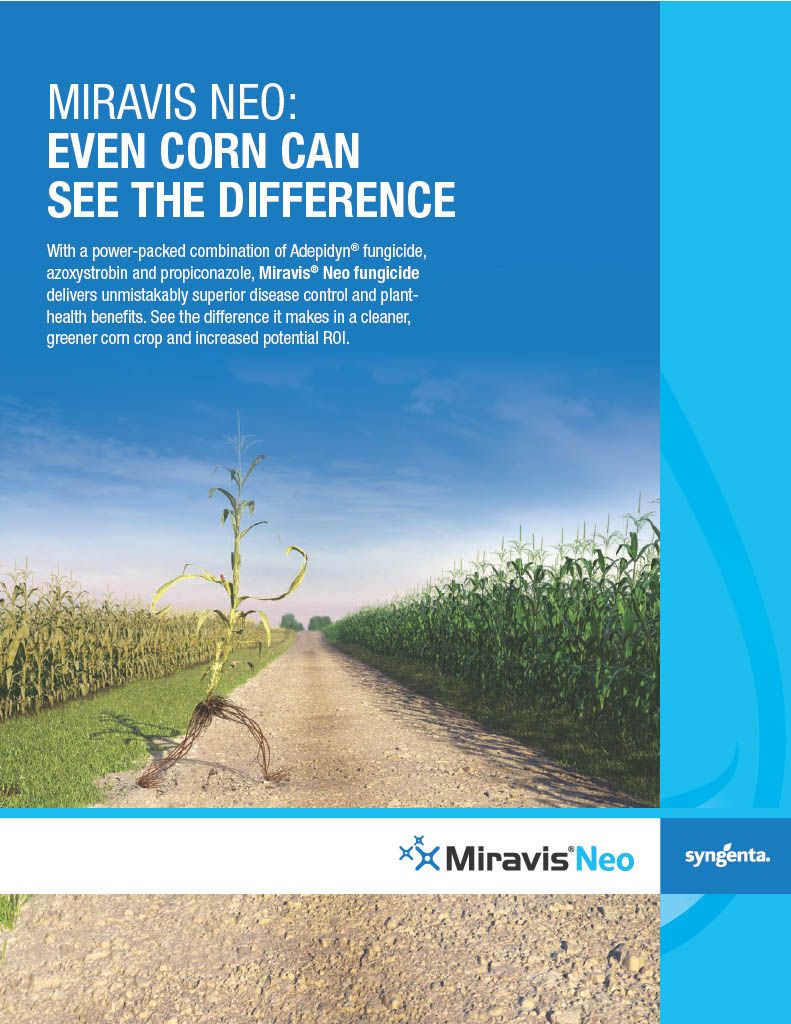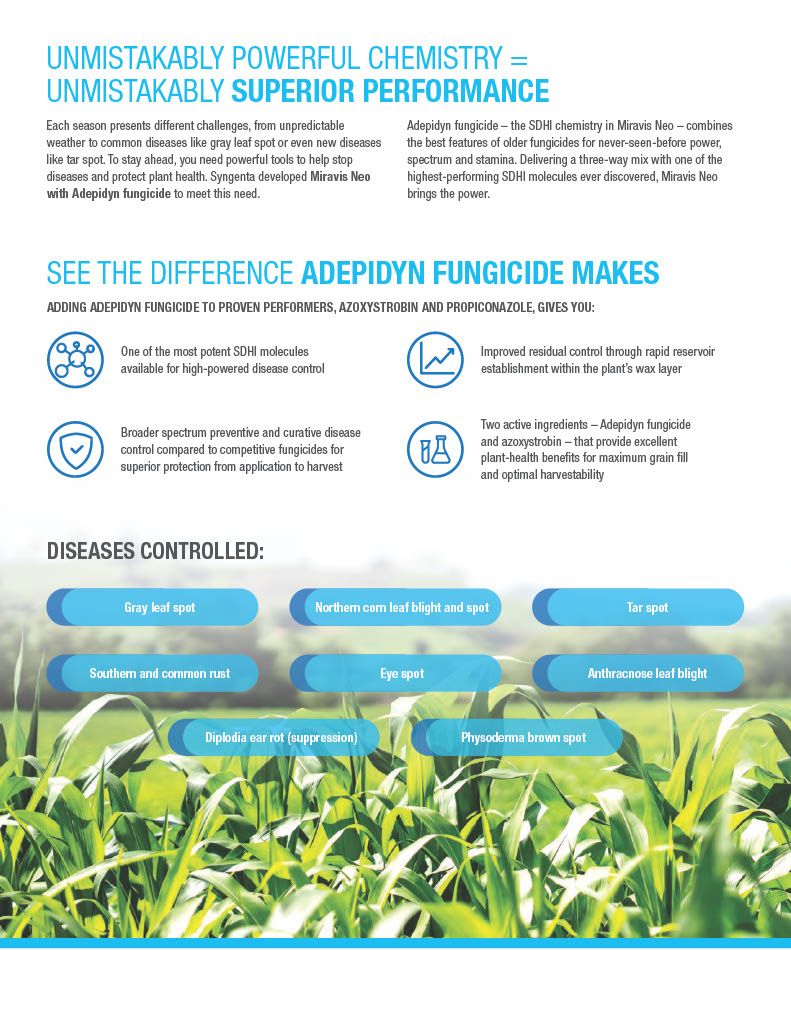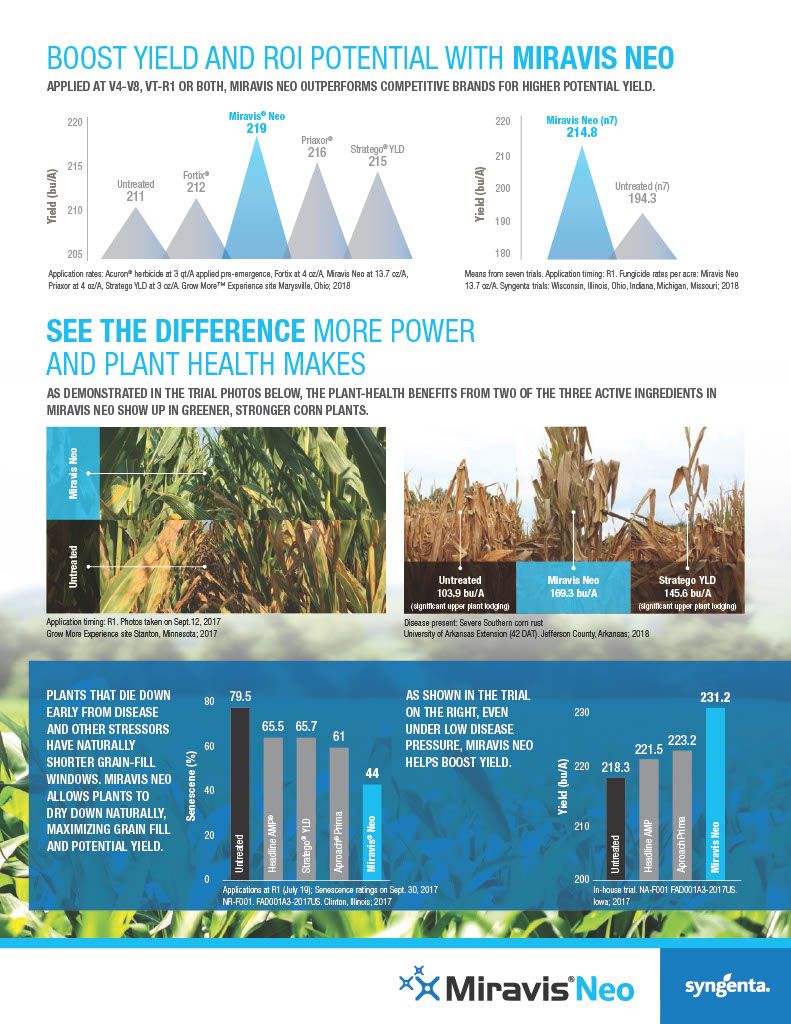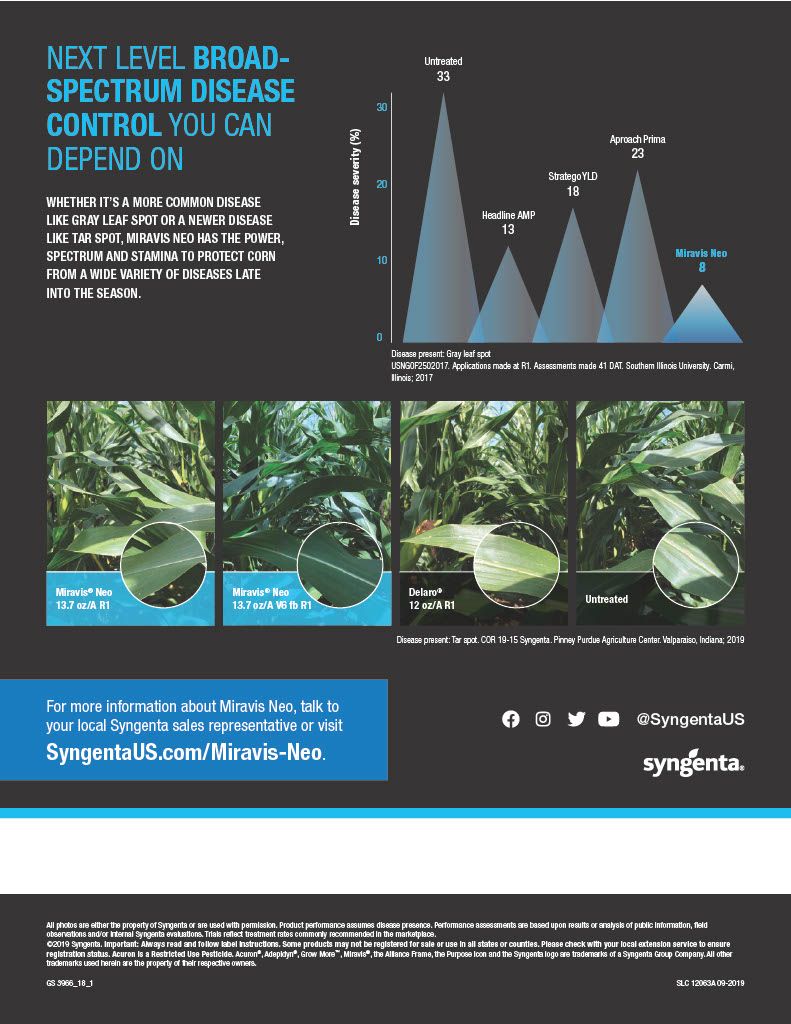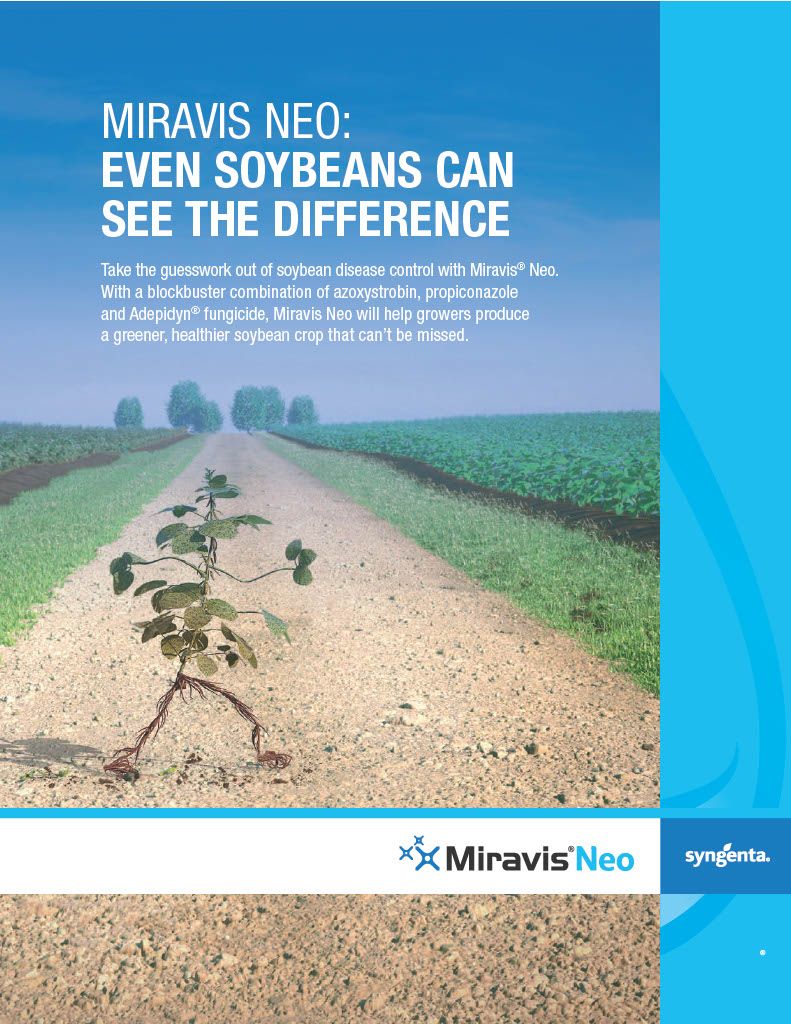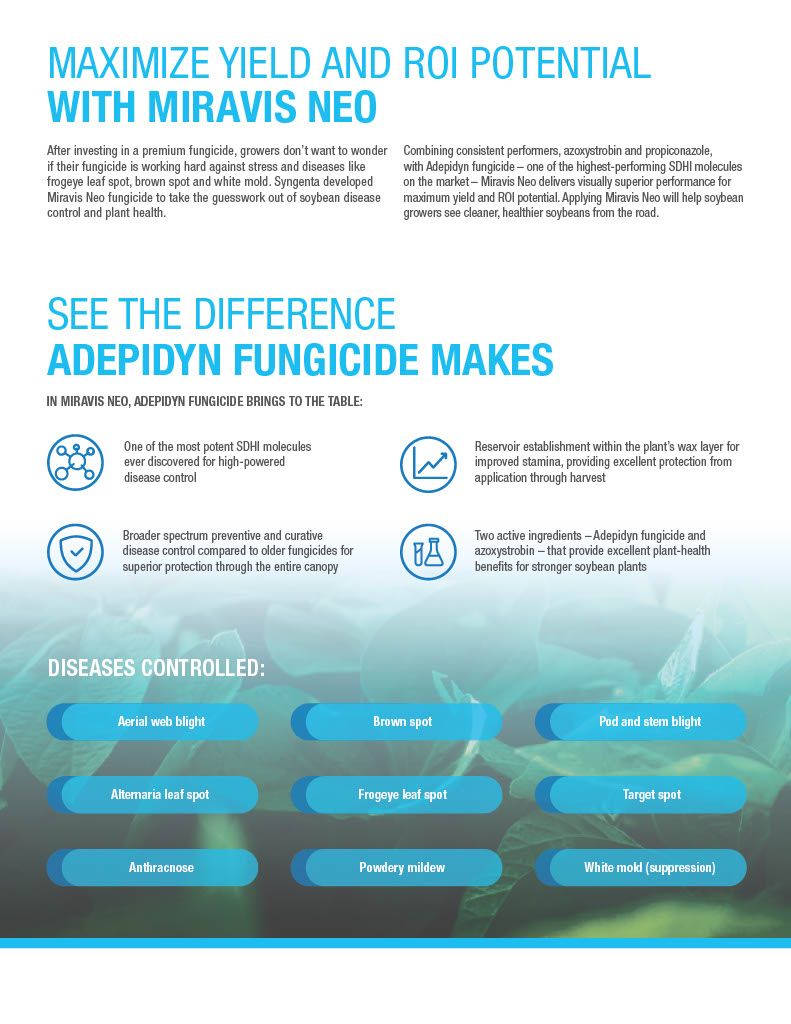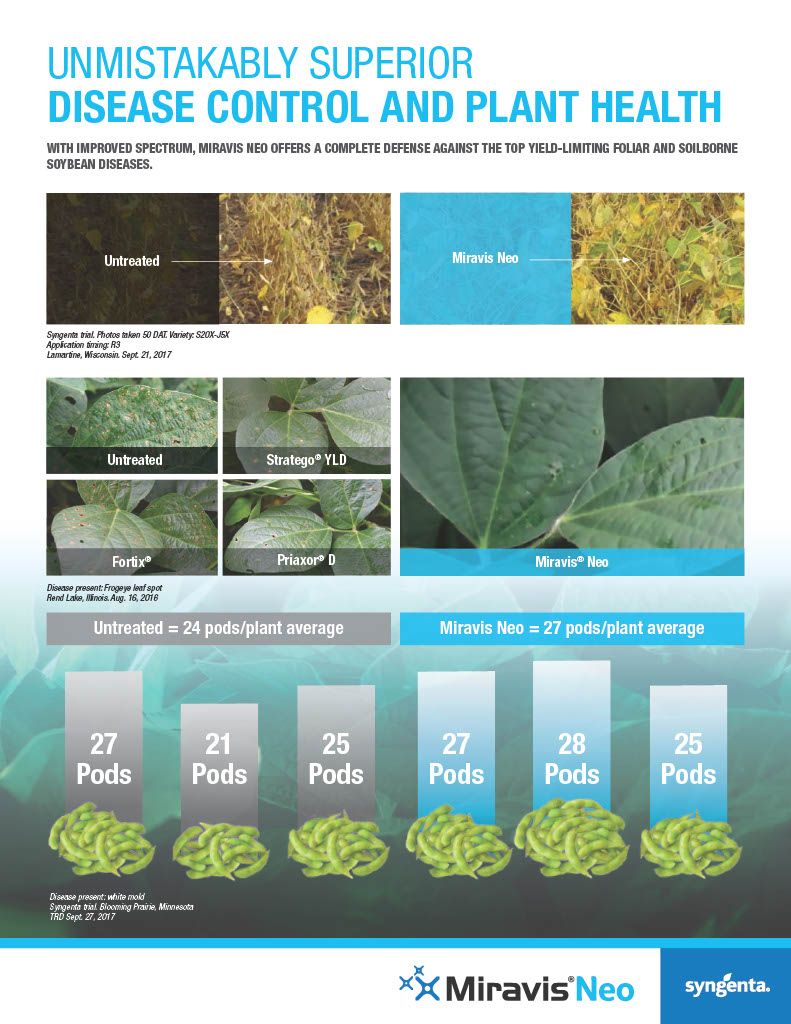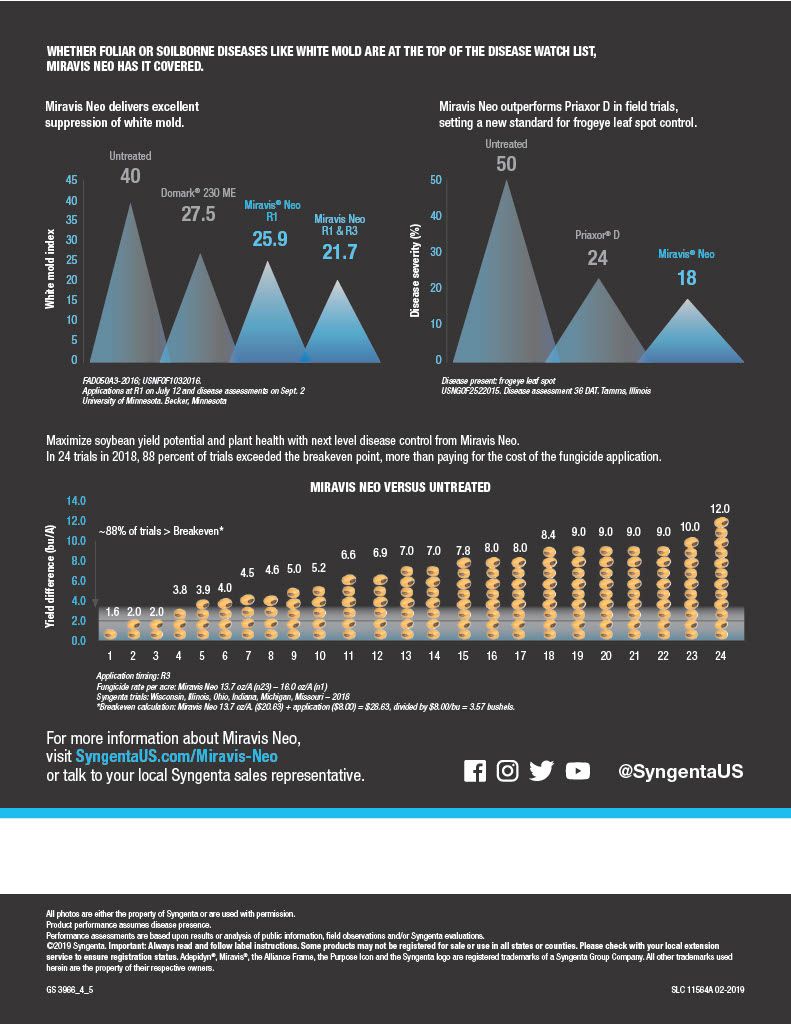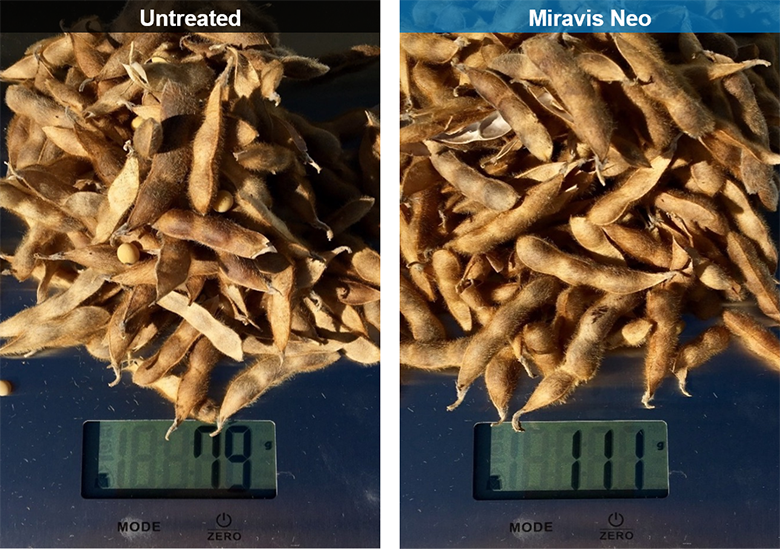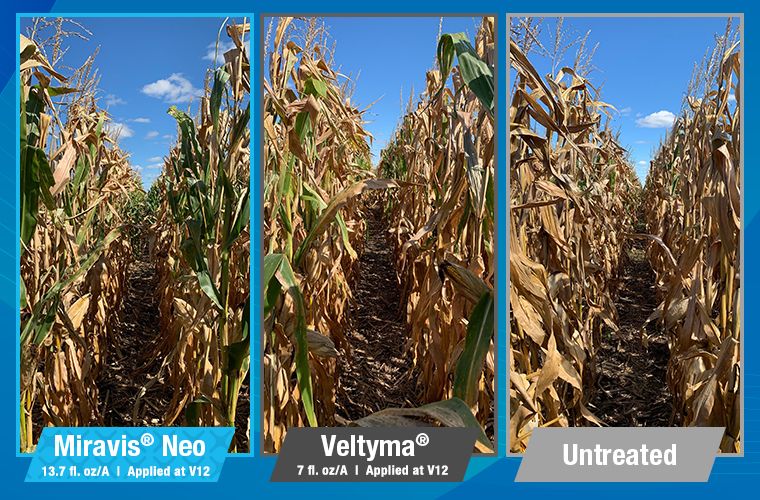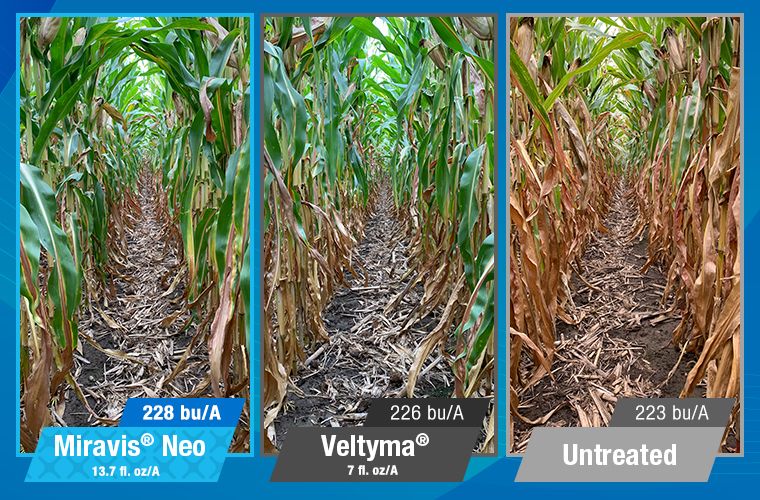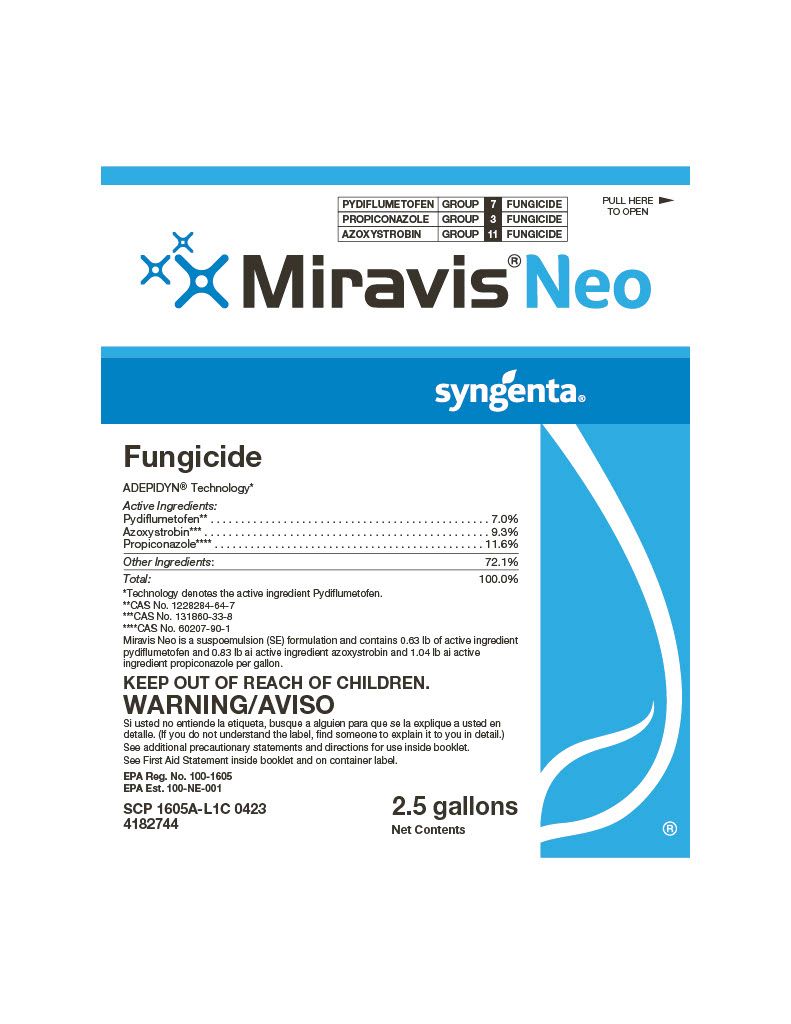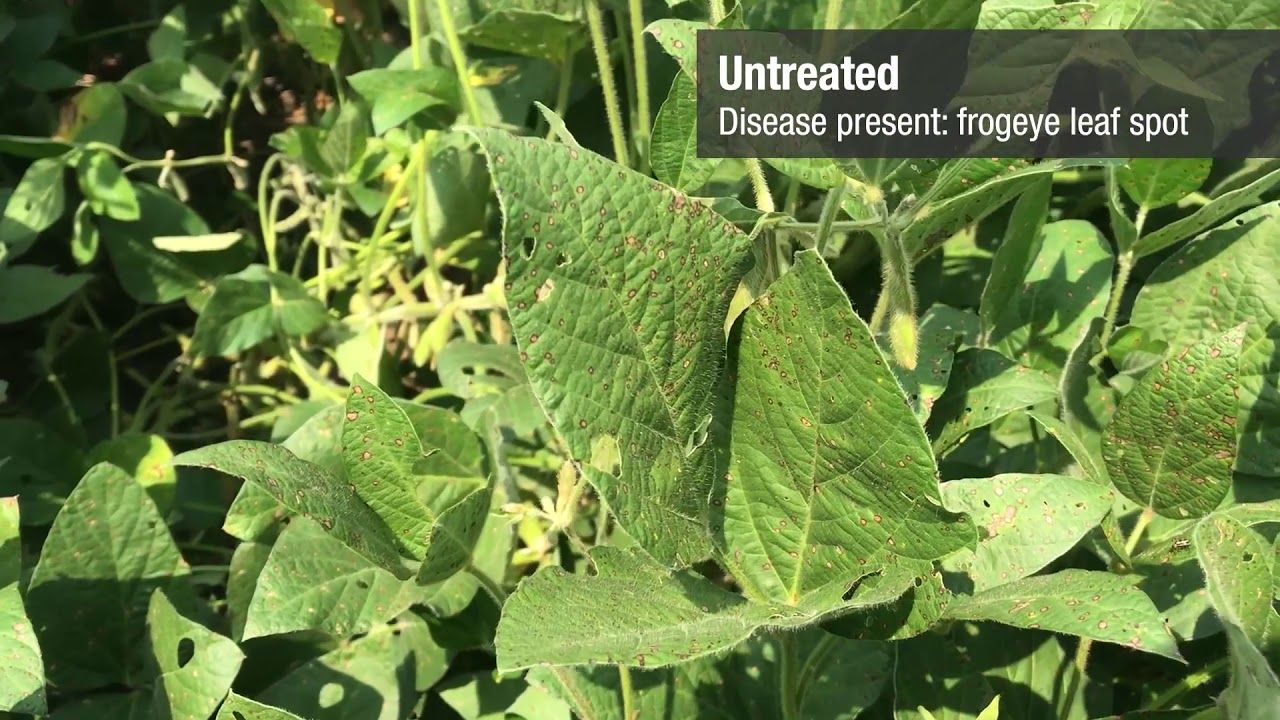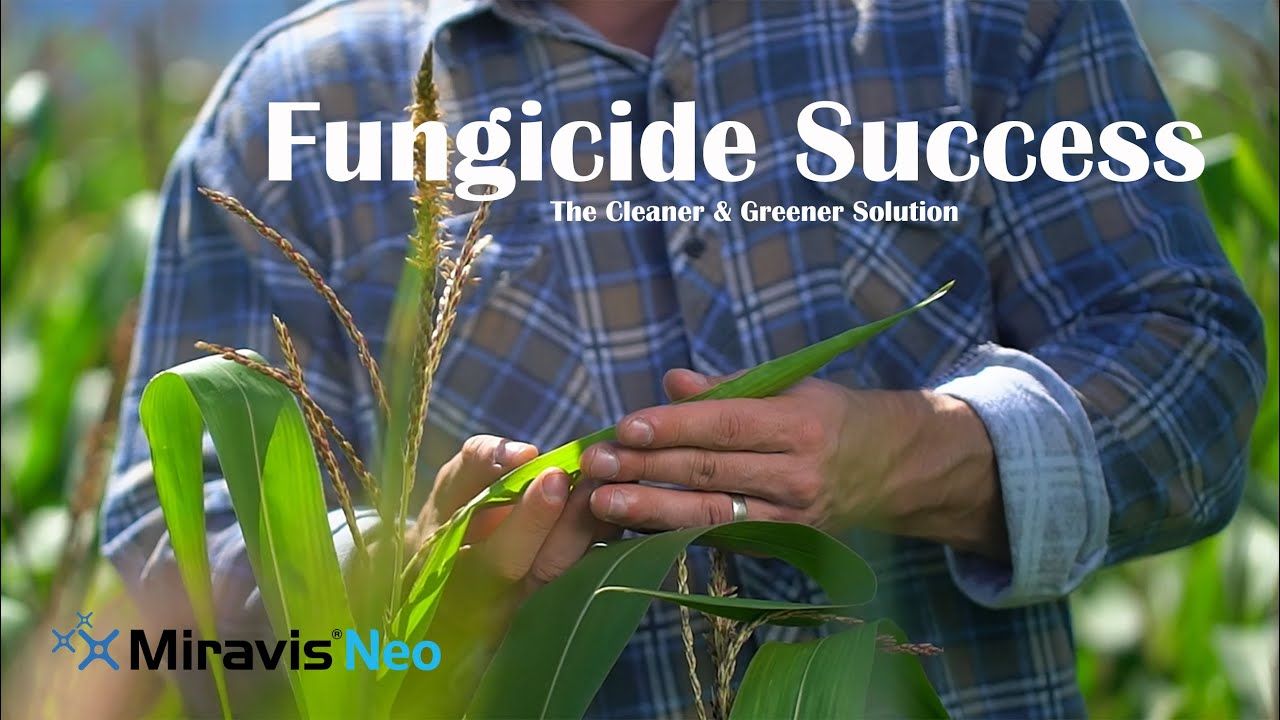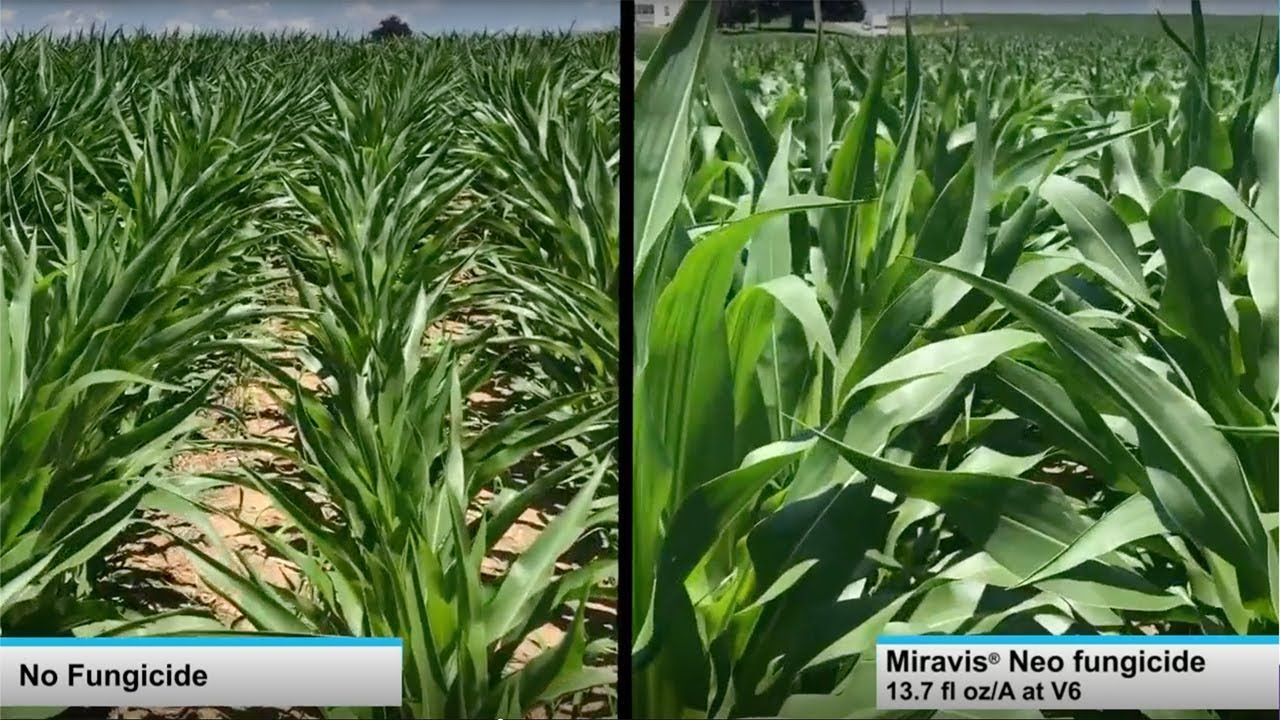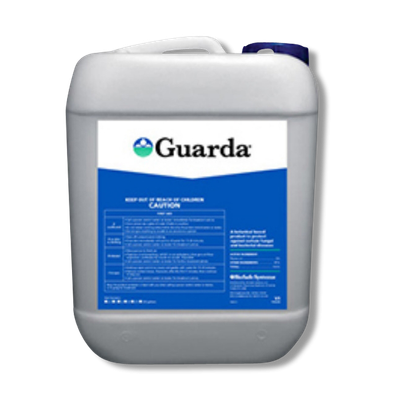Miravis Neo is another staple of fungicide and disease resistance management, specifically designed for corn, canola, soybeans, sorghum and quinoa. It is classified as a class 3, 7 and 11 systemic fungicide for the treatment of a wide range of fungal borne diseases, including but not limited to, Anthracnose leaf blight, brown spot, common rust, curvularia leaf spot, soybean rust, eye spot, gray leaf spot, northern corn leaf blight, northern corn leaf spot, southern corn leaf blight, southern rust, tar spot, powdery mildew and many others. Miravis Neo works to limit damage done by yield reducing fungi and it has been proven in field trials to improve yield over many other competitors as shown in the attachments in the product gallery.
The contents of Miravis Neo are as follows:
Pydiflumetofen** . . . . . . . . . . . . . . . . . . . . . . . . . . . . . . . . . . . . . . . . . . . . . . 7.0%
Azoxystrobin*** . . . . . . . . . . . . . . . . . . . . . . . . . . . . . . . . . . . . . . . . . . . . . . . 9.3%
Propiconazole**** . . . . . . . . . . . . . . . . . . . . . . . . . . . . . . . . . . . . . . . . . . . . . 11.6%
Other Ingredients: 72.1%
Total: 100.0%
EPA Reg. No. 100-1605
Miravis Neo should be integrated into an overall disease and pest management strategy whenever the use of a fungicide
is required. Cultural practices known to reduce disease development must be followed. This must include selection of
varieties with disease tolerance, removal of plant debris in which inoculum overwinters, and proper timing and placement
of irrigation. Consult your local agricultural authorities for additional IPM strategies established for your area. Miravis Neo
may be used in State Agricultural Extension advisory (disease forecasting) programs which advise application timing
based on environmental factors favorable for disease development.
For resistance management, please note that Miravis Neo contains a Group 7 (pydiflumetofen), a Group 3 (propiconazole),
and a Group 11 (azoxystrobin) fungicide. Any fungal population may contain individuals naturally resistant to Miravis Neo
and other Group 7, Group 3, and Group 11 fungicides. A gradual or total loss of pest control may occur over time if these
fungicides are used repeatedly in the same fields. Follow appropriate resistance-management strategies.
To delay fungicide resistance, take one or more of the following steps:
• Rotate the use of Miravis Neo or other Group 7, Group 3, and Group 11 fungicides within a growing season sequence
with different groups that control the same pathogens.
• Use tank mixtures with fungicides from a different group that are equally effective on the target pest when such use is
permitted. Use at least the minimum application rate as labeled by the manufacturer.
• Adopt an integrated disease management program for fungicide use that includes scouting, uses historical information
related to pesticide use, and crop rotation, and which considers host plant resistance, impact of environmental
conditions on disease development, disease thresholds, as well as cultural, biological and other chemical control
practices.
• Where possible, make use of predictive disease models to effectively time fungicide applications. Note that using
predictive models alone is not sufficient to manage resistance.
• Monitor treated fungal populations for resistance development.
As part of a resistance management strategy:
• Apply no more than 2 sequential applications unless otherwise stated in the crop section.
• Follow the crop-specific resistance management directions in Section 7.0.

